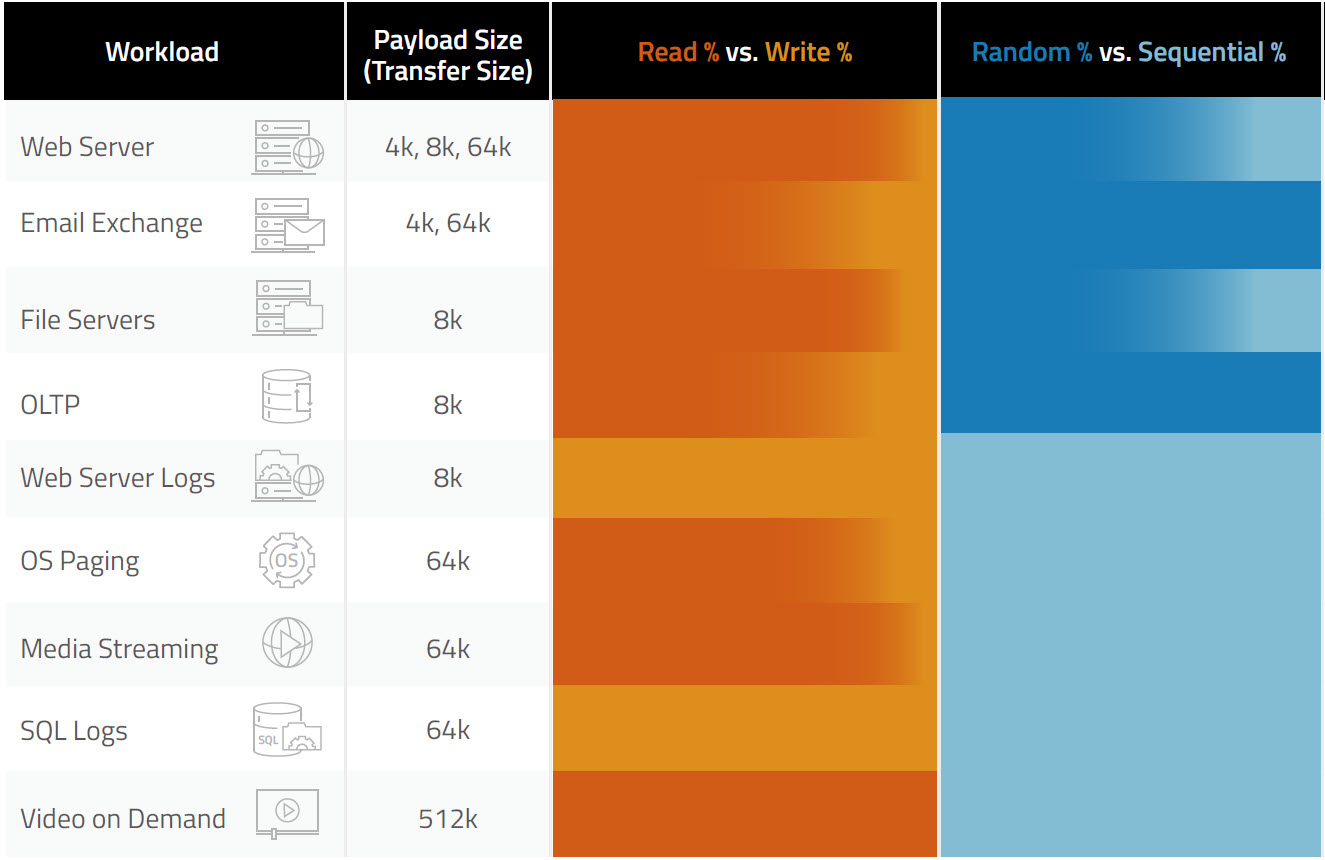The Quality of Service (QoS) rating in solid state drives (SSDs) reflects the SSD’s confidence level in consistently performing all requested processes within a certain period of time. It shows the predictability of latency (response time) and input/output operations per second (IOPS) performance under diverse read/write workloads.
- IOPS measures the number of reads and writes that an SSD can handle per second. The higher the number, the better.
- Latency or response time shows the period of time within which the SSD can complete the IO operation from the time the request was made. The lower the number, the better.
More than just measuring SSD availability or uptime, QoS measures latency predictability, ensuring that the performance target is met without degradation. Depicted in high percentages from 99.99%, the QoS confidence level demonstrates that the SSD’s latency and IOPs performance stay within a certain range over a predetermined period of time.
Why QoS Matters
QoS response time predictability is crucial in ensuring stable, consistent, and low-latency performance even under heavy or mixed workloads. SSDs with high QoS ratings meet the requirements of service level agreements (SLAs) and maintain high application performance, especially in data center environments.

The graph shows various enterprise workload scenarios
Why QoS Response Time Predictability Matters
- More Stable Performance and Less Latency Spikes. SSDs with strong QoS prevent performance fluctuations and guarantee that latency remains within acceptable limits, especially in high-load and multi-user scenarios. This stability prevents unpredictable delays that degrade responsiveness.
- Meeting Performance Commitments. Enterprises that rely on predictable latency enter into Service Level Agreements (SLAs) with manufacturers to guarantee performance commitments. SSDs with strong QoS can complete I/O operations within a certain latency range, which is critical for business operations and customer experience.
- Preventing Latency Variability from Background Operations. Wear leveling and garbage collection are processes essential to NAND flash internal management. These background operations can cause latency variability. QoS helps SSDs manage these internal management tasks to minimize their impact on response times and to ensure that latency is predictable.
ATP Industrial Enterprise SSDs: QoS Gold Standard Six 9s (99.9999%)
The "six 9s" (99.9999%) in QoS refers to the percentage of I/O operations that meet the latency or performance target under varied workloads, without degradation. It is considered the gold standard because:
- It represents extremely high predictability and minimal latency variance.
- It ensures that almost every I/O request completes within the expected time, which is critical for enterprise and data center environments where even rare latency spikes can cause significant application slowdowns or failures.
- Achieving six 9s QoS means the SSD can deliver consistent performance with very few outliers, which is vital for maintaining service level agreements (SLAs) and user experience.
ATP Electronics’ Industrial Enterprise SSDs meet the gold standard with 99.9999% QoS rating. They are exceptionally suitable for applications in the uncontrolled edge where environments are extreme, operating conditions are harsh, and temperature variations could be unpredictable. Workloads are demanding, and operations are extended, sometimes even non-stop. These SSDs deliver consistent and predictable performance without any noticeable loss, and guarantee performance levels with high levels of confidence.
The following table shows ATP Industrial Enterprise SSDs’ read/write latency in microseconds (µs) with 99.9999% QoS.
B: Boot RI: Read Intensive MU/WI: Mixed-Use/Write Intensive
Notes:
- Read/Write Latency measured with FIO using 4 KB random transfers with QD1.
- Measured using high-capacity drive in each endurance class (B, RI, MU/WI).
- Actual performance may vary by application / system usage.
- Quality of Service (QoS) measurements are performed with FIO using random 4 KB transfer size, QD1.
Conclusion
SSDs with strong or high QoS ratings ensure stable, consistent, and low-latency performance, especially in industrial enterprise environments. By making response time or latency predictable, high-QoS SSDs meet the requirements of latency-sensitive applications, comply with service level agreements (SLAs), and maintain high application performance, especially in industrial environments.
The "six 9s" (99.9999%) is the gold standard for QoS. It represents the highest confidence level in response time predictability, ensuring that latency targets are met under varied workloads, without degradation. This is essential for enterprise and data center environments where even rare latency spikes can cause significant application slowdowns or failures.
ATP Electronics' Industrial Enterprise SSDs meet the gold standard with a 99.9999% QoS rating, making them suitable for applications in extreme environments, harsh operating conditions, and unpredictable temperature variations. These SSDs deliver consistent and predictable performance without noticeable loss, guaranteeing performance levels with high levels of confidence.
For more information on ATP Industrial Enterprise SSDs, visit the ATP website or contact an ATP Representative in your area.

